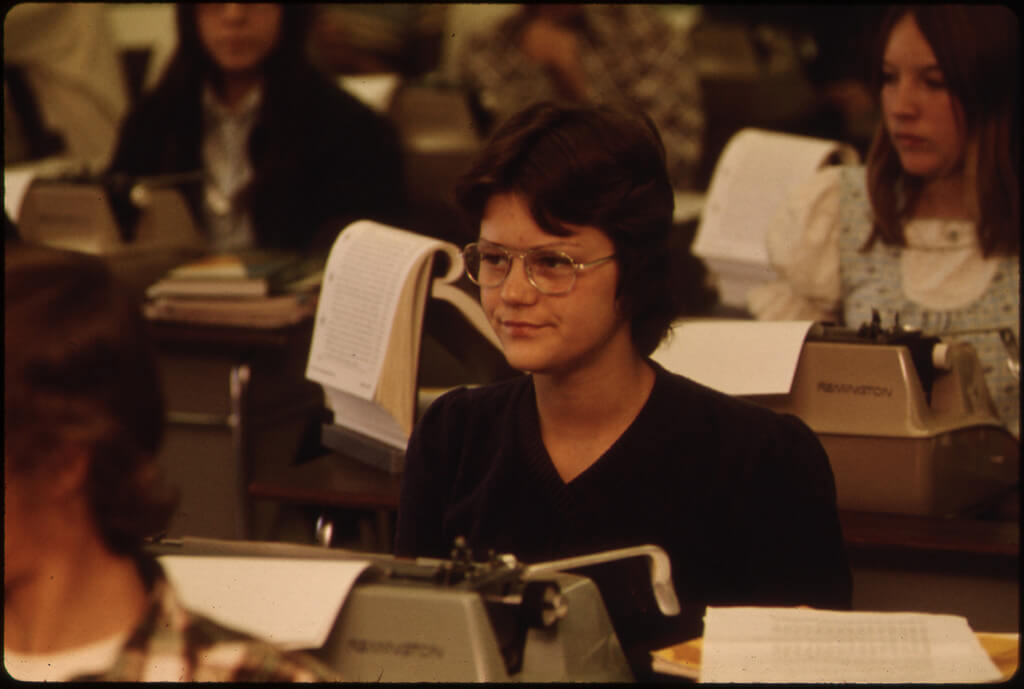Student-centric advice and objective recommendations
Higher education has never been more confusing or expensive. Our goal is to help you navigate the very big decisions related to higher ed with objective information and expert advice. Each piece of content on the site is original, based on extensive research, and reviewed by multiple editors, including a subject matter expert. This ensures that all of our content is up-to-date, useful, accurate, and thorough.
Our reviews and recommendations are based on extensive research, testing, and feedback. We may receive commission from links on our website, but that doesn’t affect our editors’ opinions. Our marketing partners don’t review, approve or endorse our editorial content. It’s accurate to the best of our knowledge when posted. You can find a complete list of our partners here.
What Is Rolling Admission?

 By
Zach Skillings
By
Zach Skillings 
Zach Skillings is the Scholarships360 Newsletter Editor. He specializes in college admissions and strives to answer important questions about higher education. When he’s not contributing to Scholarships360, Zach writes about travel, music, film, and culture. His work has been published in Our State Magazine, Ladygunn Magazine, The Nocturnal Times, and The Lexington Dispatch. Zach graduated from Elon University with a degree in Cinema and Television Arts.
Full BioLearn about our editorial policies

Cait Williams is a Content Writer at Scholarships360. Cait recently graduated from Ohio University with a degree in Journalism and Strategic Communications. During her time at OU, was active in the outdoor recreation community.
Full BioLearn about our editorial policies

Bill Jack has over a decade of experience in college admissions and financial aid. Since 2008, he has worked at Colby College, Wesleyan University, University of Maine at Farmington, and Bates College.
Full BioLearn about our editorial policies

Maria Geiger is Director of Content at Scholarships360. She is a former online educational technology instructor and adjunct writing instructor. In addition to education reform, Maria’s interests include viewpoint diversity, blended/flipped learning, digital communication, and integrating media/web tools into the curriculum to better facilitate student engagement. Maria earned both a B.A. and an M.A. in English Literature from Monmouth University, an M. Ed. in Education from Monmouth University, and a Virtual Online Teaching Certificate (VOLT) from the University of Pennsylvania.
Full BioLearn about our editorial policies

If you’re applying to college, you may have heard the term “rolling admission”. It’s a fairly popular college admission process that differs slightly from regular admission. Here’s what you need to know about rolling admission.
Don’t miss: Scholarships360’s free scholarship search tool
What does rolling admission mean?
Rolling admission is very similar to regular admission, with one key difference. Colleges with rolling admissions evaluate applications as they arrive instead of waiting to evaluate all applications after a hard deadline. Schools with rolling admissions typically open up their submission period in the fall, but sometimes as early as July. Colleges continue to evaluate applications until they’ve filled all the slots for their incoming class. This process can continue as late as the summer months, depending on how quickly spots get filled.
The absence of a hard deadline in the rolling admission process leaves students with a very wide window of time to submit their applications. This can be advantageous both for students seeking a quick admission decision and for students looking to submit a last-minute application. Keep in mind that unlike early decision and early action, rolling admission isn’t an option you choose. It’s simply the manner in which some colleges evaluate applicants.
Also see: When should I apply to college?
Benefits of rolling admission
Quick turnaround time
The rolling admission process is quicker. Because colleges evaluate applications as they are received, you can expect to hear a decision within 4-6 weeks. The earlier you apply, the earlier you’ll get your answer. This quick turnaround time makes it easier on students as they map out their plan for applying to various colleges.
Less competitive admissions process
If you apply earlier rather than later, the admissions process can be less competitive. Because your application is reviewed as it arrives, you’ll be compared to a smaller pool of applicants. Of course, the level of competition rises the longer you wait to submit your application. So if you’re looking for a leg-up in the admissions process, it’s best to submit your application as soon as possible.
Your decision isn’t binding
Rolling admission decisions aren’t binding, unlike the early decision admission process. This means that if you’re accepted by a college that utilizes rolling admission, you’re not obligated to attend that school. Rather, you have until the school’s deadline to decide whether you will attend. This leaves you with the flexibility to apply to as many other schools as you want.
Opportunity for last-minute applications
The long admission window associated with rolling admission gives students the chance to submit last-minute applications if needed. Rolling admissions are sometimes open as late as the summer months meaning you can still apply after other schools’ regular admissions deadlines have passed. This is a potential path for students seeking a last-minute college option.
Don’t miss: How many colleges should I apply to?
Drawbacks of rolling admission
Spots can fill up quickly
Although waiting until the last minute to submit your application is certainly an option, it’s not advised if you’re seeking the best chances for admission. Candidates who meet the criteria for admission are essentially admitted on a first-come, first-served basis. Colleges only have a certain number of students they can accept, so the chances of admission decrease the longer you wait to submit your application. Some colleges even set a priority deadline, meaning that students who apply by that date have a better chance of being accepted.
With this said, the intent of rolling admissions is not to be exclusionary and is meant to offer students a more flexible application option. Still, students should know that rolling admissions is a “first-come, first-served” process.
Potential for procrastination
On a similar note, the lack of a hard deadline lends itself to a higher chance of procrastination when it comes to submitting your application. It may be tempting to put off your application until next month, but it’s best to go ahead and knock it out now. Remember that the earlier you apply, the sooner you’ll hear back from the school and the higher the chance you have of being accepted.
Financial aid and housing
It’s important to keep in mind that while rolling admissions may stay open longer, that does not mean that things like the FAFSA, scholarships or housing opportunities stay open longer. If financial aid and scholarships are things you plan to utilize, make sure that your application date can accommodate those.
Similarly, if you plan to live on campus somewhere, understand when your window would be to choose your housing. Waiting till everyone else has applied might mean that you have less housing options to choose from, which could impact your time at that college.
How to make the most of rolling admission
Submit rolling applications first
As you are compiling your list of colleges, pay attention to deadlines and prioritize schools that utilize rolling admission. There’s generally only an upside for students who are applying early.
Meet priority deadlines
As we’ve mentioned, some colleges set a priority deadline for their rolling admissions. For instance, Penn State has a priority deadline of December 1. While students can still submit applications after this date, they have a better chance of being accepted if they apply before the deadline. If the college you’re applying to has a priority deadline, you should make every effort to meet the deadline if you want the best chances of admission. This is particularly important for colleges that are more selective.
Plan ahead for the SAT / ACT
Many students end up taking the SAT or ACT more than once to achieve the highest possible score. If your goal is to submit a rolling admission application early during your senior year, you should give yourself enough time to take the test multiple times. As such, consider taking the test for the first time during fall of your junior year. This will give you the chance to test again in the spring if needed.
See also: When should you take the SAT?
Ask for recommendation letters early
The first half of senior year is a busy time for teachers and counselors who are occupied with writing recommendation letters. Be respectful of their time and request recommendations at least a month before you’d like to submit your application. If you want to submit your rolling application shortly after the submission period opens, consider asking for recommendations at the end of your junior year. This provides teachers and counselors with plenty of time to craft a thoughtful letter.
Plan your essays in advance
It’s a good idea to start thinking about your essays as soon as schools and the Common App release their essay prompts. Common App prompts remain nearly identical from year to year, while colleges typically release their supplemental prompts by July or August. This means you have the opportunity to read essay prompts months in advance and start mulling over ideas. The summer is a great time to start planning your college essays.
Related: Overview of common scholarship essay prompts
Take care with your application
Although you should aim to submit your rolling application as soon as possible, this doesn’t mean you should sacrifice its quality. Submitting your application early won’t help much if you didn’t give it your best effort. The best way to submit a rolling application early and give it the proper attention is to plan well ahead of time. If you take advantage of the tips we’ve listed above, you won’t have to race against the clock to put together a solid application.
Popular colleges with rolling admission
Many schools across the country utilize rolling admission, including several Public Ivies. Here’s a few well-known colleges that have rolling admissions:
- University of Alabama
- Arizona State University
- Indiana University
- Loyola Marymount University
- University of Maine
- Michigan State University
- University of Minnesota
- University of New Haven
- Pace University
- Penn State University
- University of Pittsburgh
- Rutgers University
- University of Tulsa
Don’t miss: How to choose a college
Frequently asked questions about rolling admissions
Does rolling admission mean no deadline?
Is rolling admission harder to get into?
Is it better to apply for regular or rolling admission?




 SAT" printed on his pencil">
SAT" printed on his pencil">
